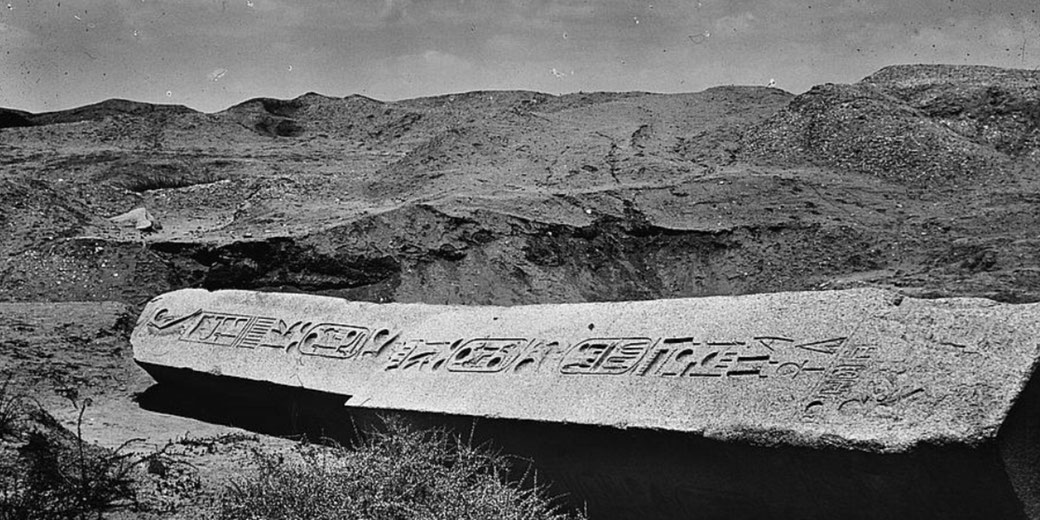The incredible rediscovery of the lost ancient Egyptian city of Tanis

Tanis, once a thriving metropolis and a significant religious hub of ancient Egypt, now lies buried under layers of sand and time, its grandeur reduced to ruins.
Despite its current state, the city's historical importance cannot be overstated. As the capital of the Nineteenth and Twenty-first dynasties of Egypt, Tanis was a center of power, culture, and religion.
Its temples, palaces, and tombs bore witness to the lives and deaths of some of Egypt's most influential pharaohs.
However, the city's disappearance and the subsequent mystery surrounding its location have made it a subject of much speculation and debate among historians and archaeologists.
What was Tanis?
Tanis, known as Djanet in ancient Egyptian and referred to as Zoan in the Hebrew Bible, was a city of immense significance in ancient Egypt.
Located in the northeastern Nile delta, it served as the capital during the Nineteenth and Twenty-first dynasties, a period of time spanning from the 13th to the 8th century BCE.
The city's strategic location near the Mediterranean Sea and the River Nile made it a bustling hub of trade and commerce.
It was also a significant religious center, housing the temple of the god Amun, one of the most important deities in the Egyptian pantheon.
The city's grandeur was reflected in its architecture, with magnificent temples, palaces, and tombs dotting its landscape.
Tanis was home to several influential pharaohs, including Psusennes I and Shoshenq I, who were instrumental in shaping the city's cultural and political landscape.
Their reigns marked a period of relative stability and prosperity, with significant advancements in art, architecture, and literature.
The tombs of these pharaohs, filled with treasures and artifacts, provide a glimpse into the opulence of the time.
However, the city's prominence began to wane towards the end of the Twenty-first dynasty, as political power shifted to other regions.
Over time, Tanis was gradually abandoned and forgotten, its once-majestic structures succumbing to the sands of the desert.
The city that was once a beacon of power and culture in ancient Egypt became a ghost town, its existence known only in historical records and legends.
How the city was rediscovered
After centuries of obscurity, the city was brought back into the light of history in the 19th century, marking a significant milestone in the field of Egyptology.
The first recorded mention of Tanis in modern times was by French explorer and scholar Jean-François Champollion, the decipherer of the Rosetta Stone, during his expedition to Egypt in the 1820s.
However, it was not until the late 19th century that systematic excavations began, led by renowned Egyptologist Auguste Mariette.
Mariette's work laid the groundwork for future explorations, but the full extent of Tanis's archaeological wealth remained hidden.
The most significant breakthrough came in the early 20th century with the work of Pierre Montet, a French archaeologist.
Montet began his excavations in Tanis in 1929, and his meticulous work over the next decade led to some of the most spectacular discoveries in the history of Egyptology.
Despite the onset of World War II, Montet continued his work, unveiling more of Tanis's hidden treasures.
His discoveries brought the lost city back into the historical narrative, sparking renewed interest in its history and culture.
Since Montet's time, numerous archaeologists have followed in his footsteps, each contributing to our understanding of Tanis.

What the archaeologists found in the lost ruins
The city's ruins, artifacts, and tombs have offered invaluable insights into its past, painting a vivid picture of its heyday.
One of the most significant discoveries in Tanis is the royal necropolis, unearthed by Pierre Montet in 1939.
This burial site, home to the tombs of several pharaohs from the Twenty-first and Twenty-second dynasties, was found remarkably intact.
The tombs contained a treasure trove of artifacts, including golden masks, jewelry, statues, and intricately decorated sarcophagi.
Among these, the silver coffin of Pharaoh Psusennes I stands out for its exquisite craftsmanship.
Made of silver and gold, it is considered one of the most beautiful pieces of ancient Egyptian art ever discovered.
In addition to the royal necropolis, the city's temples have also yielded significant findings.
The temple of Amun, the chief deity of Tanis, was a major religious center in ancient Egypt.
Excavations have revealed the temple's grandeur, with its large columns, statues, and inscriptions.
These findings have provided insights into the religious practices and beliefs of the time.
The city's layout and architectural structures have also been the subject of study. The ruins of palaces, administrative buildings, and residential areas have given archaeologists a glimpse into the city's urban planning and social structure.
The use of certain building materials and construction techniques have offered clues about the technological capabilities of the ancient Egyptians.
What we still don't know about Tanis
Despite the wealth of archaeological findings and historical records, the lost city of Tanis is enveloped in a shroud of mystery.
The circumstances surrounding its disappearance, its exact location, and the full extent of its historical significance continue to puzzle scholars and archaeologists.
One of the most intriguing aspects of Tanis is its sudden disappearance from historical records.
After serving as a prominent political and religious center for centuries, the city was gradually abandoned and forgotten.
The reasons for this are not entirely clear. Some theories suggest that political power shifts, natural disasters, or economic decline may have contributed to the city's downfall.
However, definitive evidence to support these theories is yet to be found, leaving the question of Tanis's disappearance open to speculation.
The exact location of Tanis has also been a subject of debate. While the current archaeological site is believed to be the ancient city, some scholars argue that the real Tanis may be located elsewhere, buried under the shifting sands of the Nile delta.
This theory is based on discrepancies between historical descriptions of the city and the current archaeological site.
However, without concrete evidence, this remains a hypothesis.
What do you need help with?
Download ready-to-use digital learning resources
Copyright © History Skills 2014-2025.
Contact via email
With the exception of links to external sites, some historical sources and extracts from specific publications, all content on this website is copyrighted by History Skills. This content may not be copied, republished or redistributed without written permission from the website creator. Please use the Contact page to obtain relevant permission.





